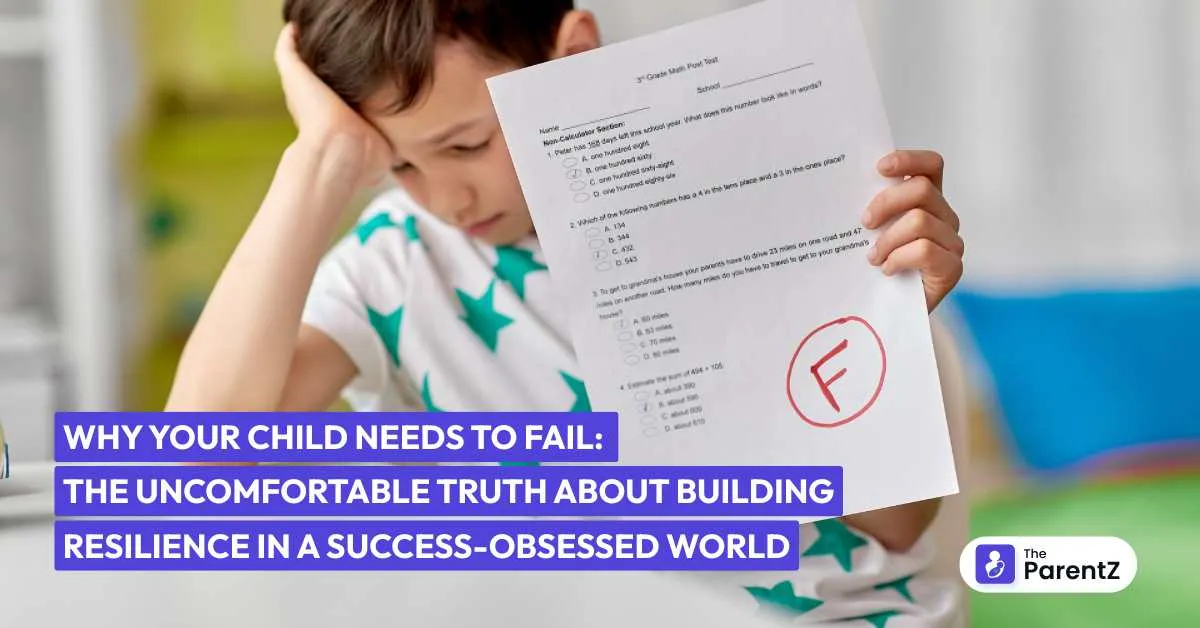Introduction
Let’s be honest—failure scares us. As parents, it’s hard to watch our children fall, stumble, or struggle. We jump in to help, to soften the blow, to fix what’s broken. But what if, by doing that too often, we’re robbing them of the very thing they need most?
Because here’s the uncomfortable truth: your child needs to fail. Not just once. Often. Thoughtfully. And with your support—not protection.
The Problem With a Success-Only Mindset
From gold stars in kindergarten to trophies for showing up, we’ve become a culture allergic to failure. Kids are praised constantly—sometimes for things they haven’t even done well. And while encouragement is vital, constant affirmation without challenge breeds fragility.
When failure finally hits—be it a test, a friendship, or a missed goal—some kids fall apart. Not because they’re weak, but because they’ve never been allowed to build their emotional muscles.
What Failure Actually Builds
- Resilience – Falling down and getting back up is where grit is born.
- Self-awareness – Failing helps kids ask, “What can I do differently?”
- Perspective – They learn that one moment doesn’t define their worth.
- Courage – Once they survive one failure, they fear the next one less.
Think about it: the kids who become adults who can take risks, learn from criticism, and keep going after a rejection—they all learned that through failure, not perfection.
What Parents Often (Innocently) Do Wrong
- Fix everything: From forgotten homework to unfair teachers, we jump in.
- Celebrate only wins: Kids start to believe their value lies only in achievement.
- Avoid discomfort: We step in at the first sign of frustration.
But growth doesn’t happen in the comfort zone—it happens just past it.
What You Can Do Instead
1. Normalize It
Talk about your own failures. Don’t just share your wins—share the job you didn’t get, the exam you flunked, the mistake that stung. Let them see that failure is part of life, not a shameful secret.
2. Praise Effort Over Outcome
Instead of “You’re so smart,” try “I’m proud of how hard you worked.” That shift teaches them to value process over perfection—and keeps them grounded when results vary.
3. Let Them Fall (Gently)
Don’t rush to solve every problem. If they forget their lunch, let them feel that hunger a little. If they bomb a quiz, resist the urge to email the teacher. Guide them through—not around—the consequences.
4. Help Them Reflect
After a failure, don’t jump straight to “It’s okay.” Ask:
- “What did you learn?”
- “What would you try differently next time?”
- “What part do you think you can control?”
This turns failure into data—not drama.
But What If They’re Really Struggling?
Let’s be clear—this isn’t about setting kids up to fail or letting them suffer without support. Resilience isn’t built by neglect—it’s built by presence.
Be there. Listen. Encourage. But let them do the climbing. Your role is the spotter, not the rescuer.
If your child is internalizing failure as personal worthlessness, it’s time to check in more deeply. Support doesn’t mean eliminating failure—it means making sure it doesn’t turn into shame.








Be the first one to comment on this story.